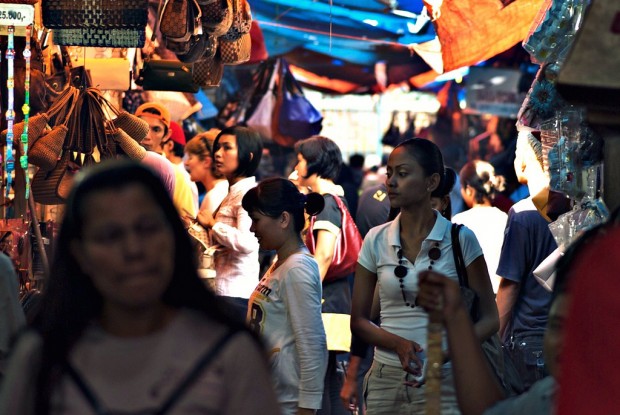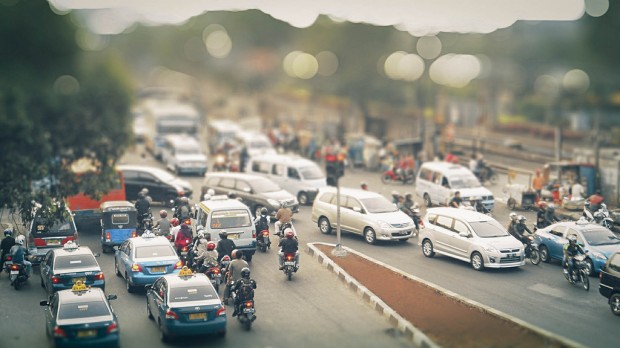I love to walk, especially when I come to a new city. You could say it is my modus operandi in getting to know a city. Perhaps it is a romantic European ideal inside of me, but I believe in the practices of the flâneur, who walks through boulevards, crosses bridges and ventures over plazas in order to experience a city. Although the flâneur is a 19th century practice that came in being after the Haussmannisation of Paris, I believe that our contemporary cities still should be experienced by walking. So, that’s what I do.
While Paris, Rome and London are perhaps more obvious choices, I also walk in Singapore, Bangkok and Jakarta. The latter surely isn’t known to be pedestrian friendly, as sometimes Jakarta’s pavements can be more dangerous than its streets – ranging from sudden holes that lead into the city’s canalisation to departed long-tailed little animals. However, walking through Jakarta showed me many ‘sights’ or hidden spots that no guide would have ever told me about.
Hidden treasures
 Image credit: Mo Riza
Image credit: Mo Riza
As I am usually very good with orientation, I could afford to get lost and let my two feet take me wherever they wanted. If I felt like going left, then that’s what I did. I let my eyes decide my route. At the end of the day, I always found my back to the hotel. People in Jakarta are also very approachable, so I always could ask for directions if I needed to.
Jakarta doesn’t necessarily have any must-see attractions – hence, I was free to explore. It didn’t take long to get lost, as I wandered into a neighbourhood close to the Ciliwung River in Central Jakarta. What I found stunned me greatly.
Also read: A Photographic Tour of East Asian Megacities
I found every single fabric, thread, and logo to fake any known clothing brand. I could even buy the correct tags for each of the different Levi’s trousers – all purchasable in packs of hundred pieces. I had discovered an entire neighbourhood that sold and produced fake clothing, bags and shoes on a mass scale – openly.
Upon returning home, I tried to find any information about it, but there was nothing. Perhaps it is needless to mention, but I became a kind of attraction myself walking through the very narrow alleys in between the shops. Everybody greeted me with any English phrase they knew. Some people even sang Beatles’ song as they saw me approaching. For some strange reason I felt very welcome.
Size matters
I hadn’t come to Jakarta with a checklist of things to do and see. I had no intention to visit all the trending hipster cafes in the south of Jakarta. My mission was to explore the city by foot and see what I find and to enjoy whatever I encounter.
If you have been to Jakarta before or heard anything about the city, then you might know that the Indonesian capital is not just huge, but has vast traffic congestion. Stretching 40 km from north to south and east to west, Jakarta is home to around 10 million people and the same amount of bikes.
With such dimensions, walking in the city appears to be an impossible job – but only if you actually need to get to a specific place. I had no need to be anywhere, but there were my two feet could take me.
“Where are you going?”
Wherever I went in Jakarta, people thought I was lost. I somewhat was, but they didn’t know that I was lost on purpose. It would happen frequently that a taxi, ojek (motorbike-taxi) or an anggot (small van) pulled up next to me on the road and asked “where are you going?” While I tried to explain my situation in the beginning, I soon opted for the fast answer “I don’t know” and kept walking.
Street life
 Image credit: Yoga Karta
Image credit: Yoga Karta
While walking along Jakarta’s never ending streets, one constantly processes and wonders. Mostly I wondered about where all these people were going. As traffic never stops, one can’t help but imagine there must be a destination to be reached by each person that passes me.
You may think there isn’t much to see on Jakarta’s streets, but there is plenty if you pay attention. After a day or two, I started to notice the small nuances of life around me. There were guards and construction workers sleeping in the shadow of trees, office workers having lunch at small stalls by the road, men and women selling petrol in plastic bottles for the thousands of bikes swooshing by, and groups of ojek drivers resting, chatting, and smoking.
One reason why I love to explore cities on foot is because I believe to get a glance of ordinary life. As tourists we often gravitate towards the outstanding attractions and sights that mostly don’t bear any notion of daily life and are without ‘normal’ people.
Also read: 18 Reasons You Should Visit Indonesia
Life in Jakarta happens alongside its roads. While the middle / upper class and foreigners are drawn into the life of the city’s shopping malls, the daily life of most of the 10 million inhabitants happens just off the road.
Although Jakarta’s roads are mostly dirty, chaotic, and polluted, they are the city’s pulsating veins connecting 10 millions lives. Not many people walk along those roads, as bikes are accessible and somewhat affordable. When walking through Jakarta, not all is glory and easy. It is mostly a nightmare, as crossing big roads might take forever (if you stick to pedestrian traffic lights) and sidewalks can suddenly end halfway on a motorway.
Nonetheless, I am glad I explored Jakarta by foot. Accidently stumbling upon hidden markets, eating with locals by the side of the road and daring to just walk into the traffic (the best way to cross the road) are all experiences I wouldn’t want to miss. See you soon Jakarta.






